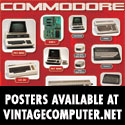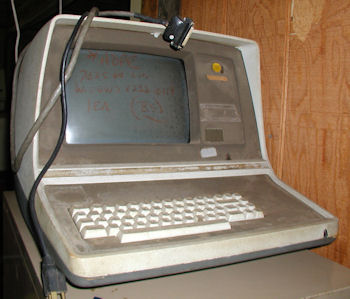The original TV Typewriter on display in the MARCH museum was donated by Bill Dudley. I don't have any pictures at the moment. Bill showed up on Wednesday and we took the thing apart to see if it could be made functional again.
Here are some project notes for future reference, I will come back to this post asap.
1. The keyboard attached to the unit is a George Risk. See same keyboard model I have the tech doc for the keyboard, but this was not necessary, all of the voltages checked out OK. The keyboard voltages and connections are good. We checked the repeat key mod Bill had made. We monitored the voltage coming into the TV Typerwriter from the keyboard. Each time a key was pressed, the voltage jumped 15 millivolts (from 80 to 95). We did not go so far as to verify that when you press an "a" you get an "a" sent by the keyboard.
When powered on and attached to a display the TVTW dumps the jibberish contents of RAM to the screen, and presents a blinking cursor. We were unable to get keyboard keystokes to output to the screen however. No response generated at all.
The TV Typerwriter has a baud rate adjustment knob which we used to attempt to get positive results at various bauds, but no improvement.
Using the keyboard we can occasionally clear the screen.
We tured to the TV Typewriter itself to trace key pulses to find a fault in the wiring or power.
The -5V( neg or pos.?) sources were registering -4.72V
Bill thought that this was NOT a problem. I suggest checking that however against the chips tolerances.
Next we can
1) try hooking the keyboard up to another display terminal using a null modem cable to verify that it's working correctly (can send correct chars to screen?)
2) using the schematic/book check the voltages until we find problem chips or ICs, replace and see if that fixes the problem.
3) I believe we found no faults, but re-check power supply.
3) Make sure RAM is OK, test voltages coming into RAM, 1488, UART, etc.
Reply
|



